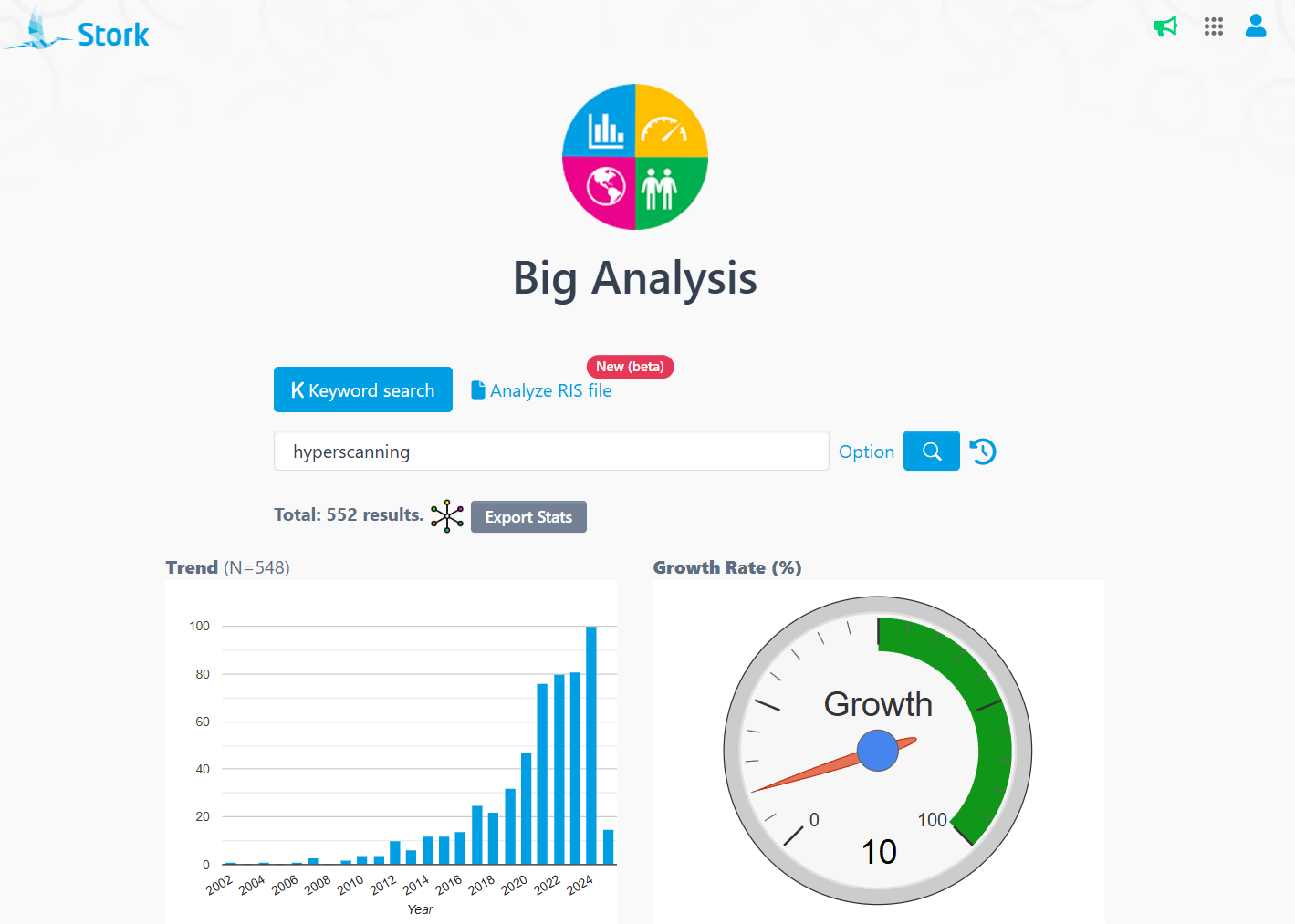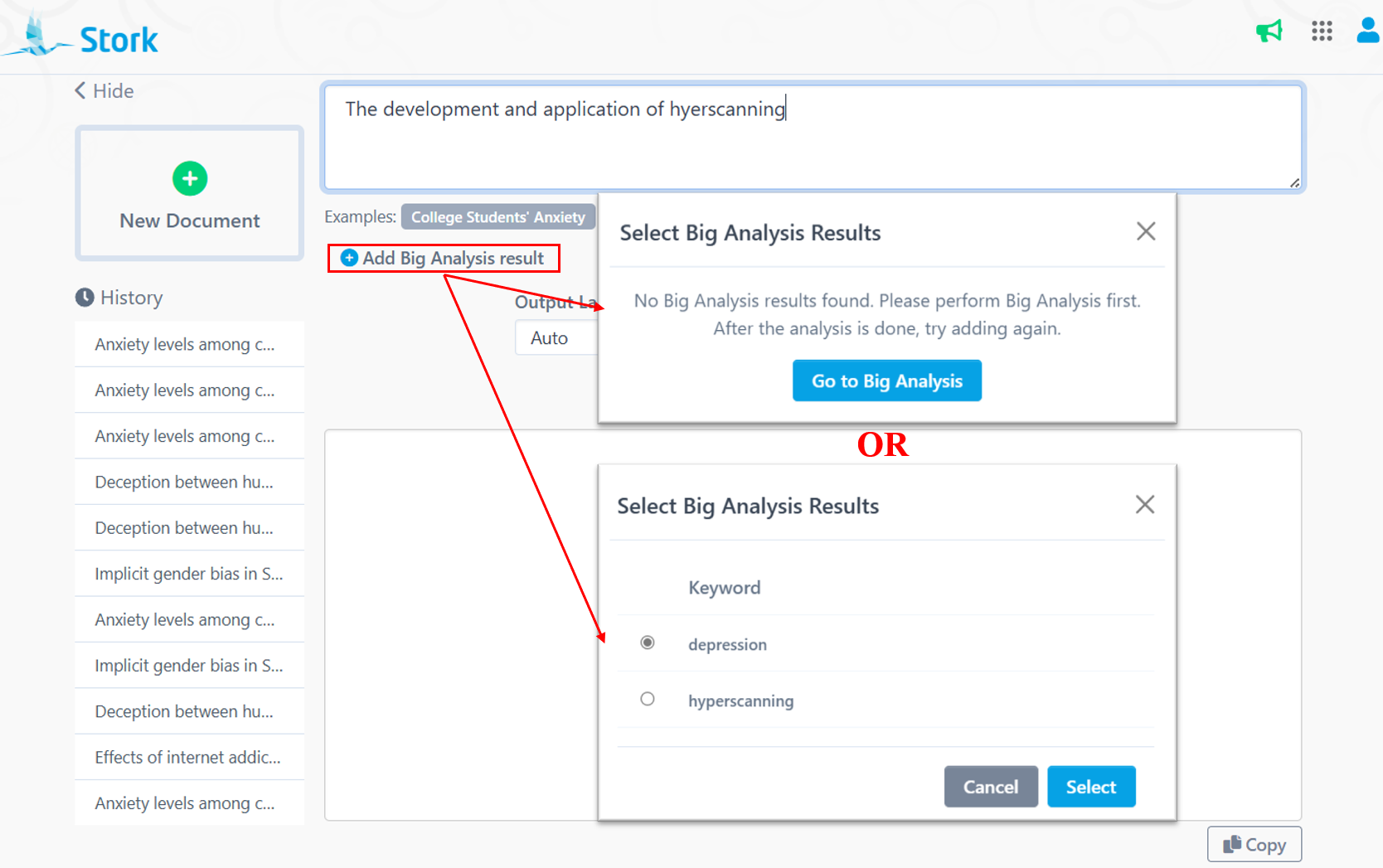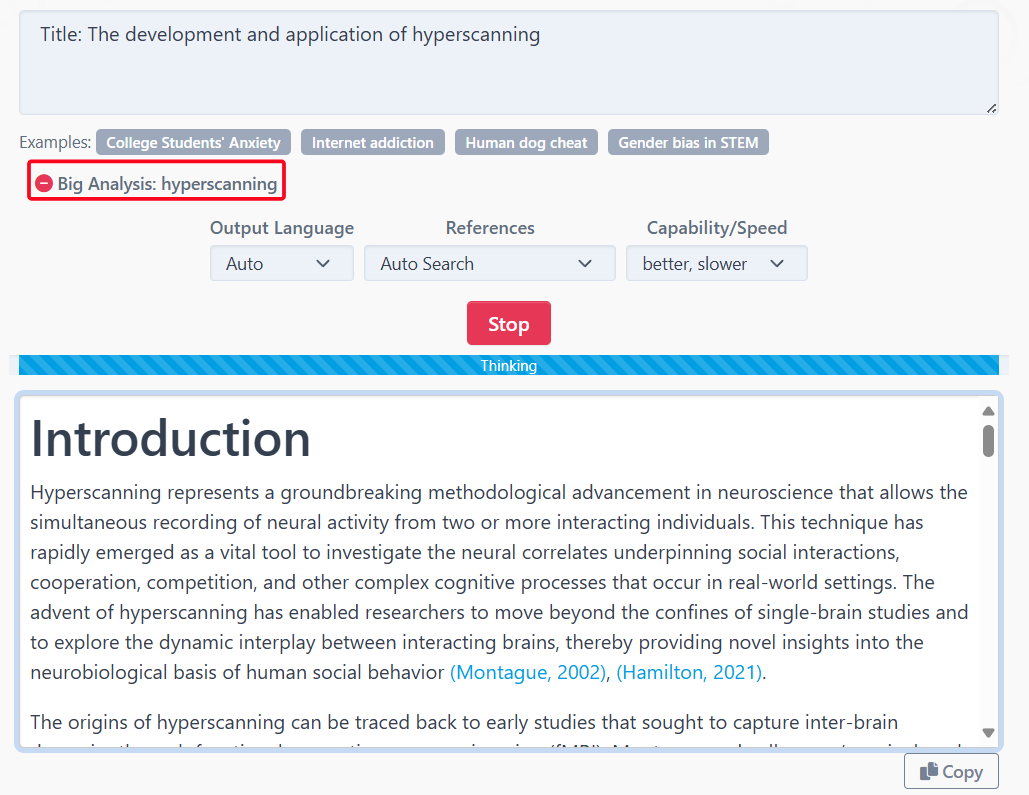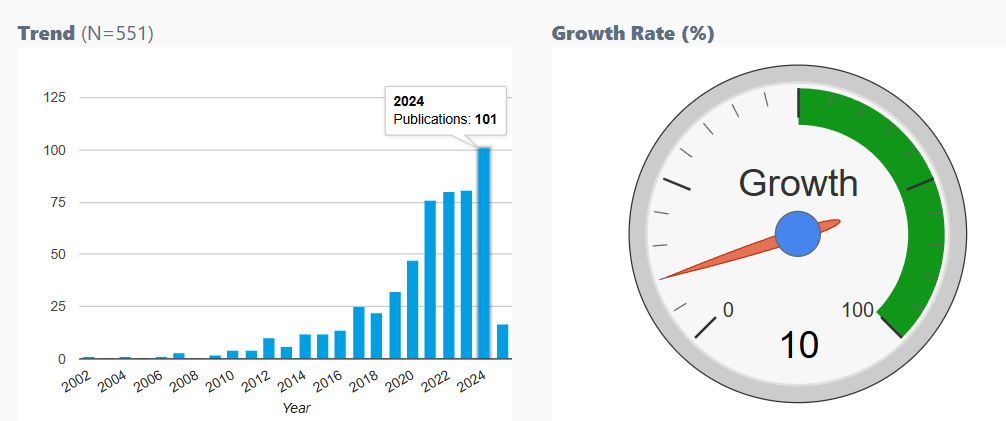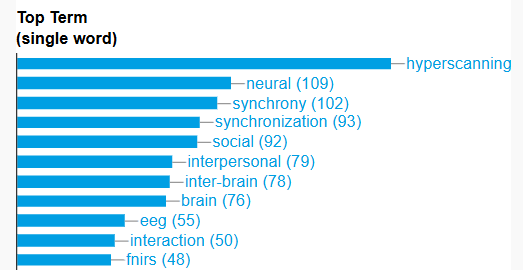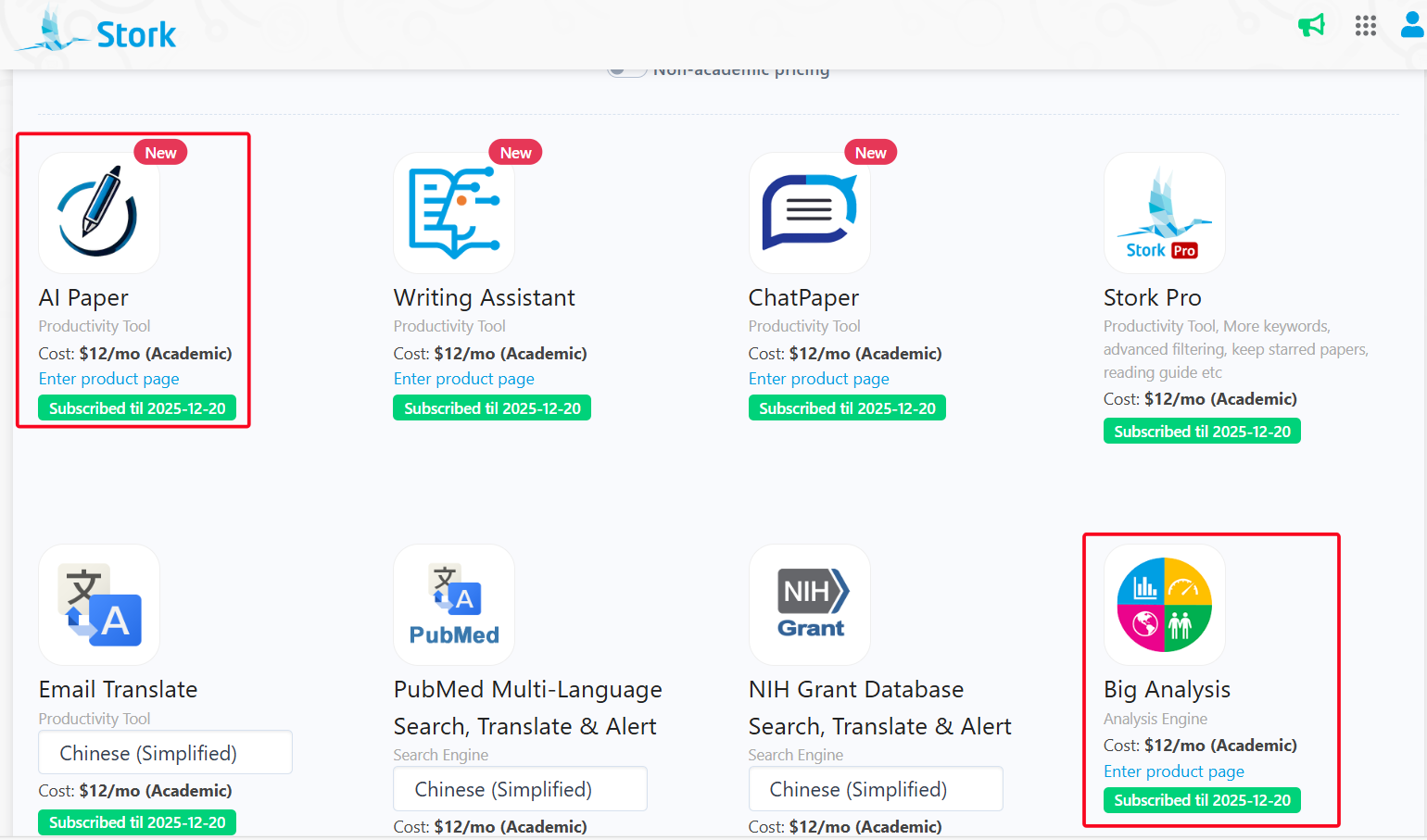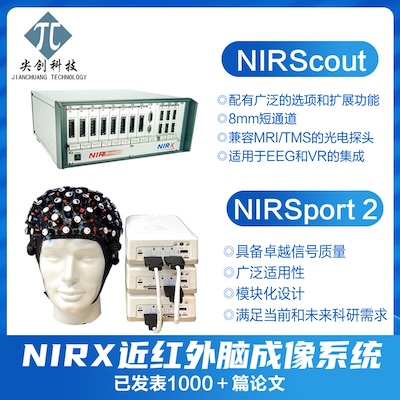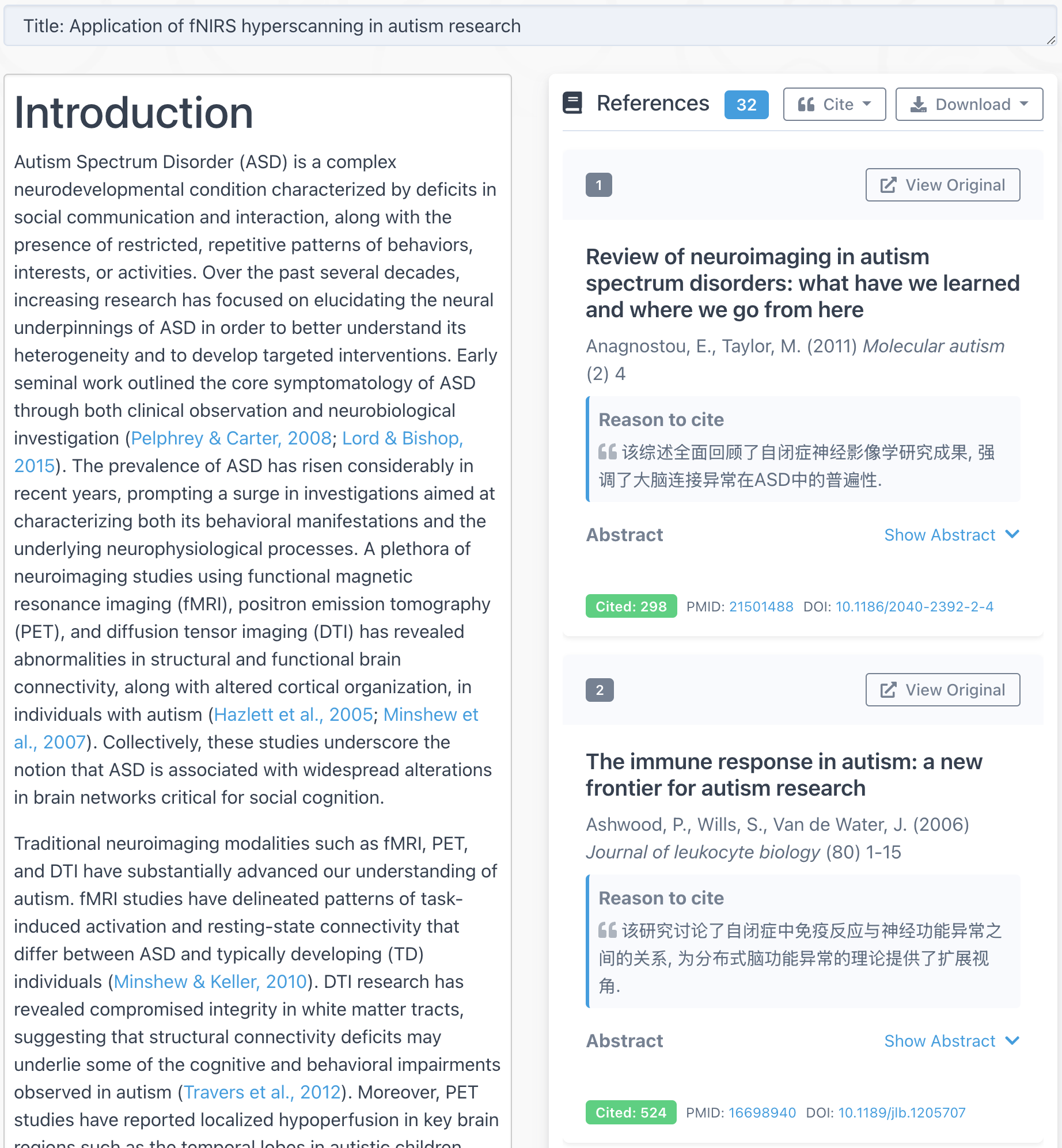
TL; DR
AI Paper has introduced a new "Add Big Analysis results" button, which enables AI Paper incorporate Big Analysis results into writing.
Stork's AI Paper is designed to generate high-quality introductions, essays, and abstracts based on the research title and any relevant materials. Some users have asked: Since the results from the Big Analysis are valuable for writing reviews, how can they be incorporated into AI Paper's writing process?
To address this, AI Paper has provided a shortcut button allowing you to directly incorporate the data from Stork's Big Analysis, including trends, growth rate, word frequency, genes, diseases, brain regions, etc.
Click "Add Big Analysis results" in AI Paper writing interface to select the corresponding data. If no historical Big Analysis results are available, AI Paper will notify you and provide a quick link to access Big Analysis. If you have multiple search histories, simply choose the relevant one.
In the example below, we enter the title "The development and application of hyperscanning" and added the Big Analysis results of "hyperscanning". The language was set to Auto (matching the input language), references were set to Auto Search (no limits on reference range), and writing Capability/Speed was set to "better, slower" (for a more powerful model). Here are the Introduction written by AI Paper.
The generated introduction integrates the results from Big Analysis in several key areas:
AI Paper:
Over the past two decades, there has been explosive growth in hyperscanning research. A recent bibliometric analysis encompassing 551 papers revealed that the number of publications using the keyword “hyperscanning” increased from a handful in the early 2000s to over 100 in 2024, reflecting a consistent annual growth rate of approximately 10%. This trend underscores both the scientific community’s growing interest in inter-brain synchronization and the technique’s expanding utility across various domains of neuroscience research. The increasing frequency of terms such as “neural”, “synchrony”, and “social” within these studies reflects the convergence of interests in understanding the neural basis of social interaction.
Big Analysis:
AI Paper and Big Analysis help you write higher-quality papers. Stay tuned for more tips to make your research journey even smoother!
【How to use?】
AI Paper and Big Analysis are advanced features offered by Stork, which require a subscription (you can try for free). After registering/logging in to Stork (https://www.storkapp.me), you can find AI Paper and Big Analysis under the advanced features section. Then you can try them out or subscribe. Alternatively, you can visit the official AI Paper website directly at https://www.storkapp.me/aipaper/ and the Big Analysis website at https://www.storkapp.me/meta/.

